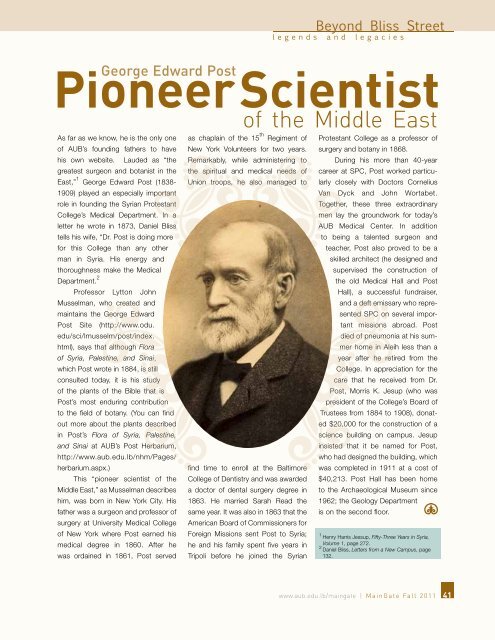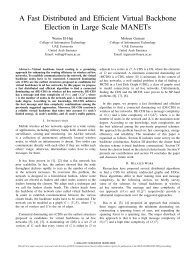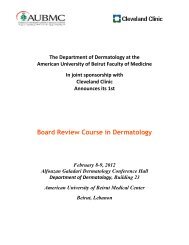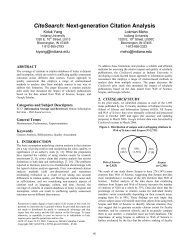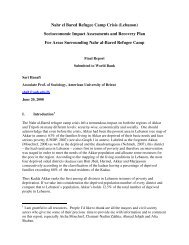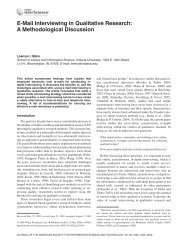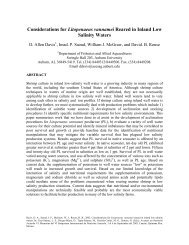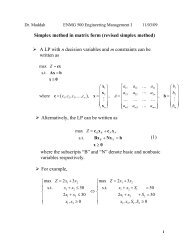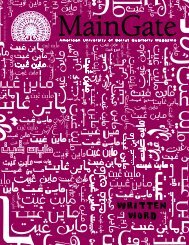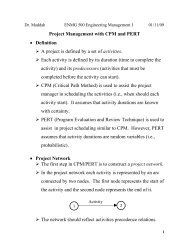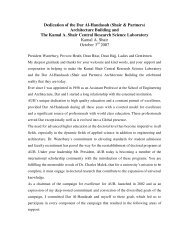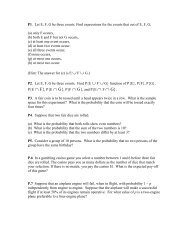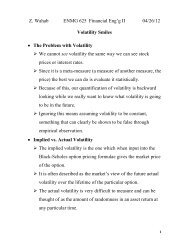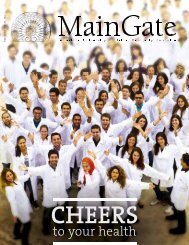All in the - American University of Beirut
All in the - American University of Beirut
All in the - American University of Beirut
- No tags were found...
You also want an ePaper? Increase the reach of your titles
YUMPU automatically turns print PDFs into web optimized ePapers that Google loves.
Beyond Bliss Streetlegends and legaciesGeorge Edward PostPioneerScientistAs far as we know, he is <strong>the</strong> only one<strong>of</strong> AUB’s found<strong>in</strong>g fa<strong>the</strong>rs to havehis own website. Lauded as “<strong>the</strong>greatest surgeon and botanist <strong>in</strong> <strong>the</strong>East,” 1 George Edward Post (1838-1909) played an especially importantrole <strong>in</strong> found<strong>in</strong>g <strong>the</strong> Syrian ProtestantCollege’s Medical Department. In aletter he wrote <strong>in</strong> 1873, Daniel Blisstells his wife, “Dr. Post is do<strong>in</strong>g morefor this College than any o<strong>the</strong>rman <strong>in</strong> Syria. His energy andthoroughness make <strong>the</strong> MedicalDepartment. 2Pr<strong>of</strong>essor Lytton JohnMusselman, who created andma<strong>in</strong>ta<strong>in</strong>s <strong>the</strong> George EdwardPost Site (http://www.odu.edu/sci/lmusselm/post/<strong>in</strong>dex.html), says that although Flora<strong>of</strong> Syria, Palest<strong>in</strong>e, and S<strong>in</strong>ai,which Post wrote <strong>in</strong> 1884, is stillconsulted today, it is his study<strong>of</strong> <strong>the</strong> plants <strong>of</strong> <strong>the</strong> Bible that isPost’s most endur<strong>in</strong>g contributionto <strong>the</strong> field <strong>of</strong> botany. (You can f<strong>in</strong>dout more about <strong>the</strong> plants described<strong>in</strong> Post’s Flora <strong>of</strong> Syria, Palest<strong>in</strong>e,and S<strong>in</strong>ai at AUB’s Post Herbarium,http://www.aub.edu.lb/nhm/Pages/herbarium.aspx.)This “pioneer scientist <strong>of</strong> <strong>the</strong>Middle East,” as Musselman describeshim, was born <strong>in</strong> New York City. Hisfa<strong>the</strong>r was a surgeon and pr<strong>of</strong>essor <strong>of</strong>surgery at <strong>University</strong> Medical College<strong>of</strong> New York where Post earned hismedical degree <strong>in</strong> 1860. After hewas orda<strong>in</strong>ed <strong>in</strong> 1861, Post served<strong>of</strong> <strong>the</strong> Middle Eastas chapla<strong>in</strong> <strong>of</strong> <strong>the</strong> 15 th Regiment <strong>of</strong>New York Volunteers for two years.Remarkably, while adm<strong>in</strong>ister<strong>in</strong>g to<strong>the</strong> spiritual and medical needs <strong>of</strong>Union troops, he also managed t<strong>of</strong><strong>in</strong>d time to enroll at <strong>the</strong> BaltimoreCollege <strong>of</strong> Dentistry and was awardeda doctor <strong>of</strong> dental surgery degree <strong>in</strong>1863. He married Sarah Read <strong>the</strong>same year. It was also <strong>in</strong> 1863 that <strong>the</strong><strong>American</strong> Board <strong>of</strong> Commissioners forForeign Missions sent Post to Syria;he and his family spent five years <strong>in</strong>Tripoli before he jo<strong>in</strong>ed <strong>the</strong> SyrianProtestant College as a pr<strong>of</strong>essor <strong>of</strong>surgery and botany <strong>in</strong> 1868.Dur<strong>in</strong>g his more than 40-yearcareer at SPC, Post worked particularlyclosely with Doctors CorneliusVan Dyck and John Wortabet.Toge<strong>the</strong>r, <strong>the</strong>se three extraord<strong>in</strong>arymen lay <strong>the</strong> groundwork for today’sAUB Medical Center. In additionto be<strong>in</strong>g a talented surgeon andteacher, Post also proved to be askilled architect (he designed andsupervised <strong>the</strong> construction <strong>of</strong><strong>the</strong> old Medical Hall and PostHall), a successful fundraiser,and a deft emissary who representedSPC on several impor-tant missions abroad. Postdied <strong>of</strong> pneumonia at his summerhome <strong>in</strong> Aleih less than ayear after he retired from <strong>the</strong>College. In appreciation for <strong>the</strong>care that he received from Dr.Post, Morris K. Jesup (who waspresident <strong>of</strong> <strong>the</strong> College’s Board <strong>of</strong>Trustees from 1884 to 1908), ed $20,000 for <strong>the</strong> construction <strong>of</strong> ascience build<strong>in</strong>g on campus. Jesup<strong>in</strong>sisted that it be named for Post,who had designed <strong>the</strong> build<strong>in</strong>g, whichwas completed <strong>in</strong> 1911 at a cost <strong>of</strong>donat-$40,213. Post Hall has been hometo <strong>the</strong> Archaeological Museum s<strong>in</strong>ce1962; <strong>the</strong> Geology Departmentis on <strong>the</strong> second floor.1 Henry Harris Jessup, Fifty-Three Years <strong>in</strong> Syria,Volume 1, page 272.2 Daniel Bliss, Letters from a New Campus, page132.www.aub.edu.lb/ma<strong>in</strong>gate |Ma<strong>in</strong>Gate Fall 201141


